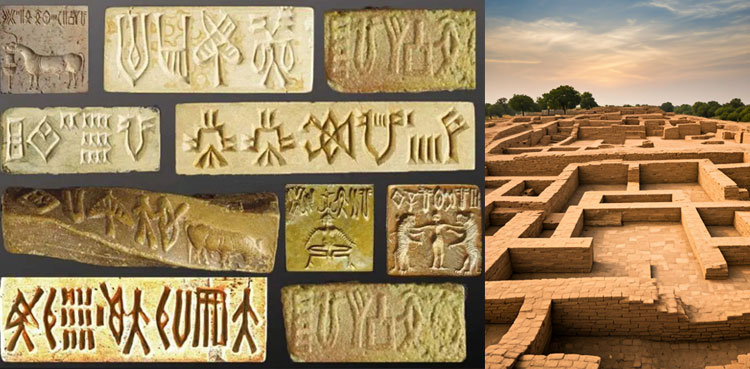
[ad_1]
The Indus Valley Civilization, one of the world’s earliest urban civilizations, flourished between 3300 BCE and 1300 BCE. Its major cities, including Mohenjo-daro and Harappa, showcased remarkable urban planning, advanced sanitation systems, and a sophisticated culture.
However, one of the most enduring mysteries of this ancient civilization lies in its writing system. The inscriptions found at Mohenjo-daro, in particular, have baffled archaeologists for decades due to their enigmatic nature.
The Indus Valley Script
The Indus Valley script is a unique writing system that appears to have developed independently of any other known ancient script. It is characterized by its geometric shapes and symbols, which are often found on seals, pottery, and other artifacts. While there are thousands of inscriptions, they are typically short and fragmentary, making it difficult to decipher their meaning.
Challenges to Decipherment
Several factors have hindered the decipherment of the Indus Valley script:
- Lack of a Rosetta Stone: A bilingual or trilingual inscription, similar to the Rosetta Stone that helped decipher Egyptian hieroglyphs, has not been found for the Indus Valley script. This means there is no direct translation to compare and contrast with the unknown script.
- Limited Context: The inscriptions are often found on small artifacts, providing limited context for understanding their meaning. It is unclear whether they represent names, numbers, or other types of information.
- Unique Script: The Indus Valley script is unlike any other known ancient script, making it challenging to establish connections or comparisons with other languages.
- Possible Pictographic Nature: Some scholars believe that the Indus Valley script might be primarily pictographic, meaning it represents objects or ideas rather than individual sounds. This would make deciphering it even more complex.
- Limited Archaeological Evidence: While the Indus Valley Civilization was advanced, there is a relatively limited amount of archaeological evidence, including inscriptions, to work with.
Recent Developments
Despite the challenges, researchers continue to explore various approaches to deciphering the Indus Valley script. Some have proposed connections to other ancient languages, such as Dravidian or Proto-Indo-European, while others have focused on analyzing the script’s structure and patterns.
In recent years, technological advancements have also contributed to the study of the Indus Valley script. Computer-aided analysis techniques have been used to identify patterns and correlations within the inscriptions, potentially providing clues about their meaning.
Facts about one of world’s earliest major cities, Mohenjo-Daro – ARY NEWS
Conclusion
The Indus Valley script remains one of the most intriguing unsolved mysteries of ancient history. While significant progress has been made in understanding the Indus Valley Civilization, the decipherment of its writing system continues to be a formidable challenge. As researchers continue to explore new avenues and apply innovative methods, there is hope that the enigma of Moen-Jo-Daro inscriptions will eventually be solved, shedding light on this fascinating ancient culture.
Sources:
- Possehl, Gregory. 2002. The Indus Civilization in the Greater Context of South Asia. Oxford University Press.
- Wheeler, Mortimer. 1968. The Indus Civilization at Mohenjo-daro. Cambridge University Press.
- Kenoyer, Jonathan Mark. 1998. Ancient Cities of the Indus Valley World. Oxford University Press.
[ad_2]
Source link







